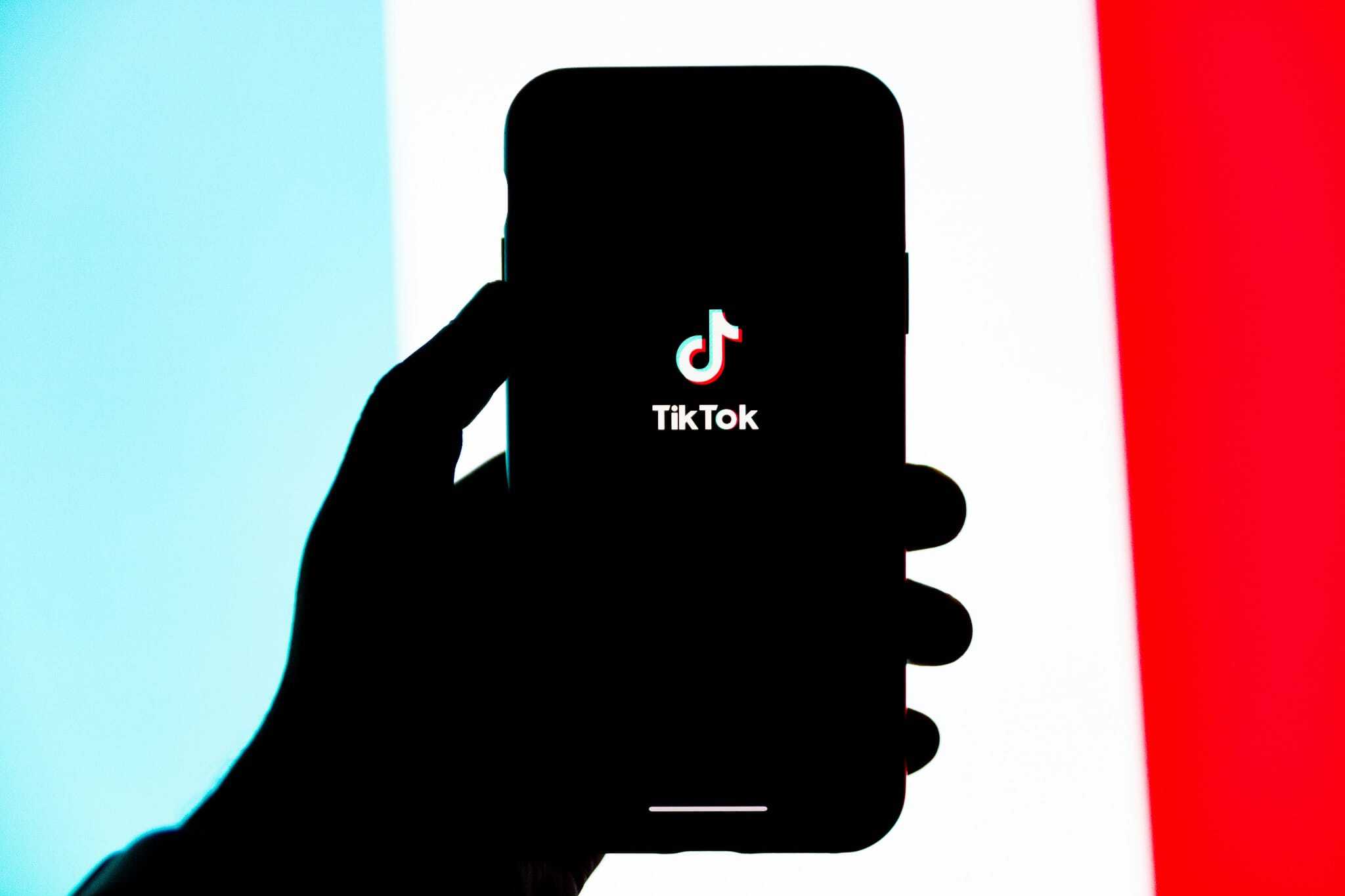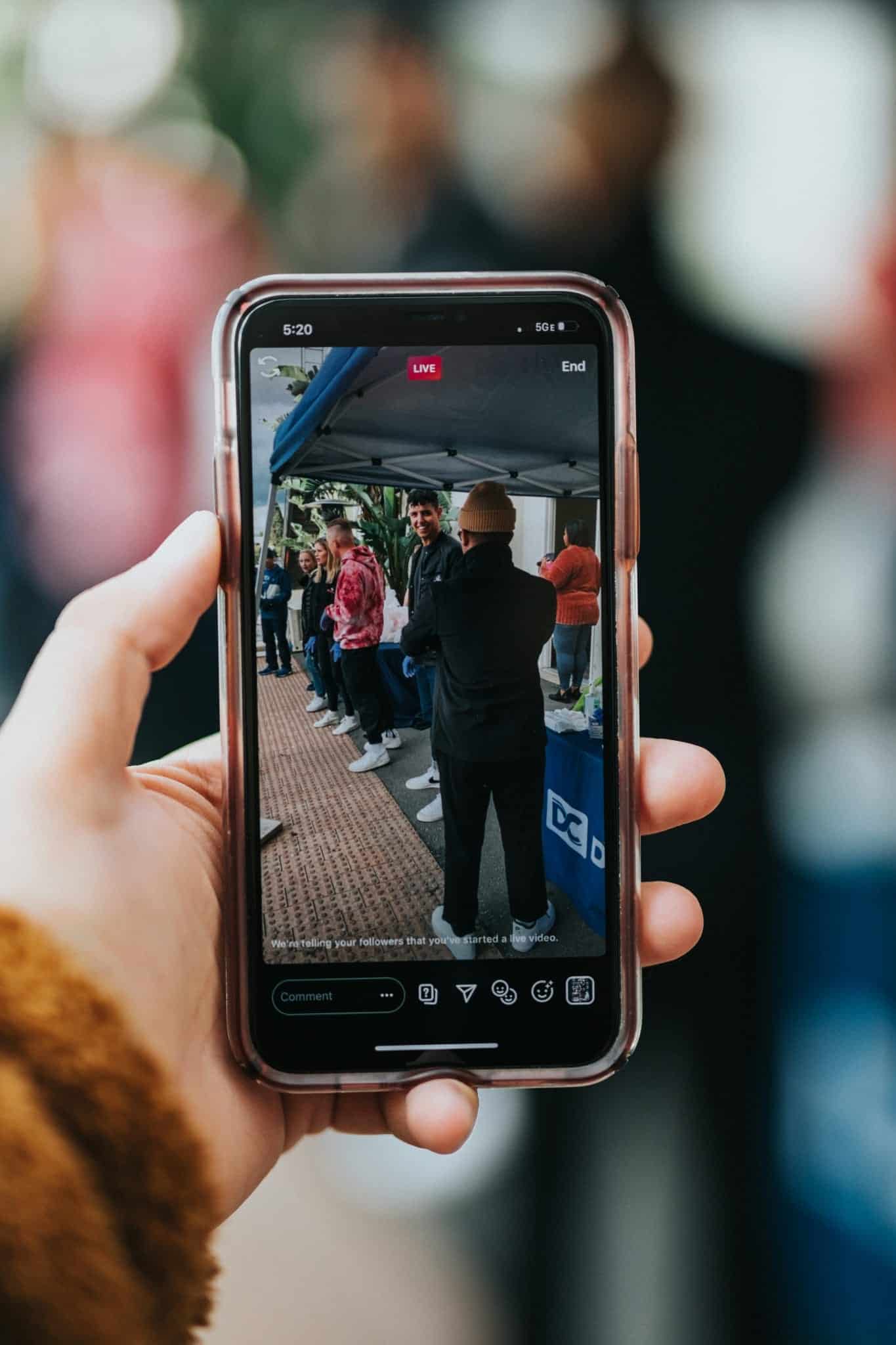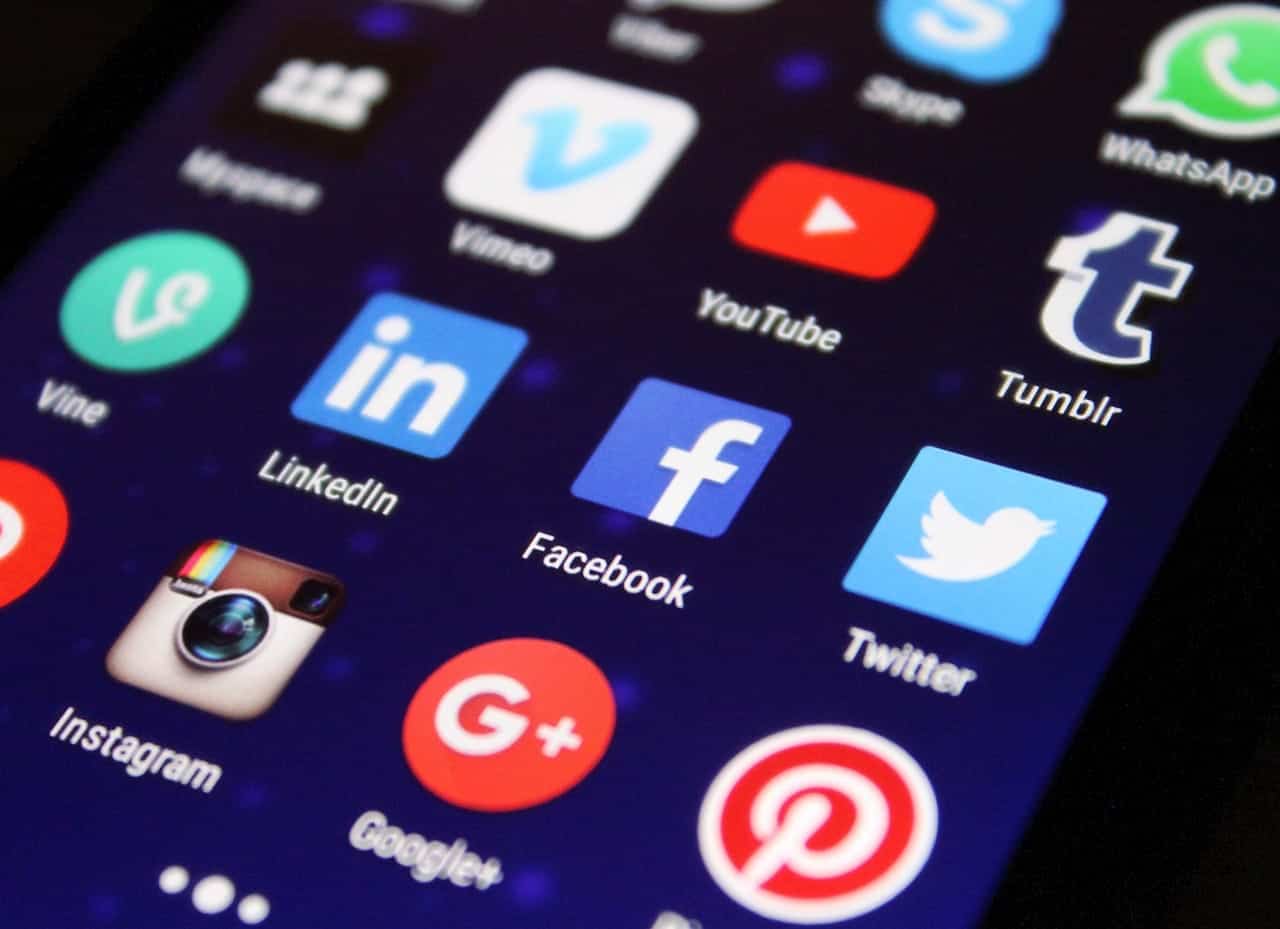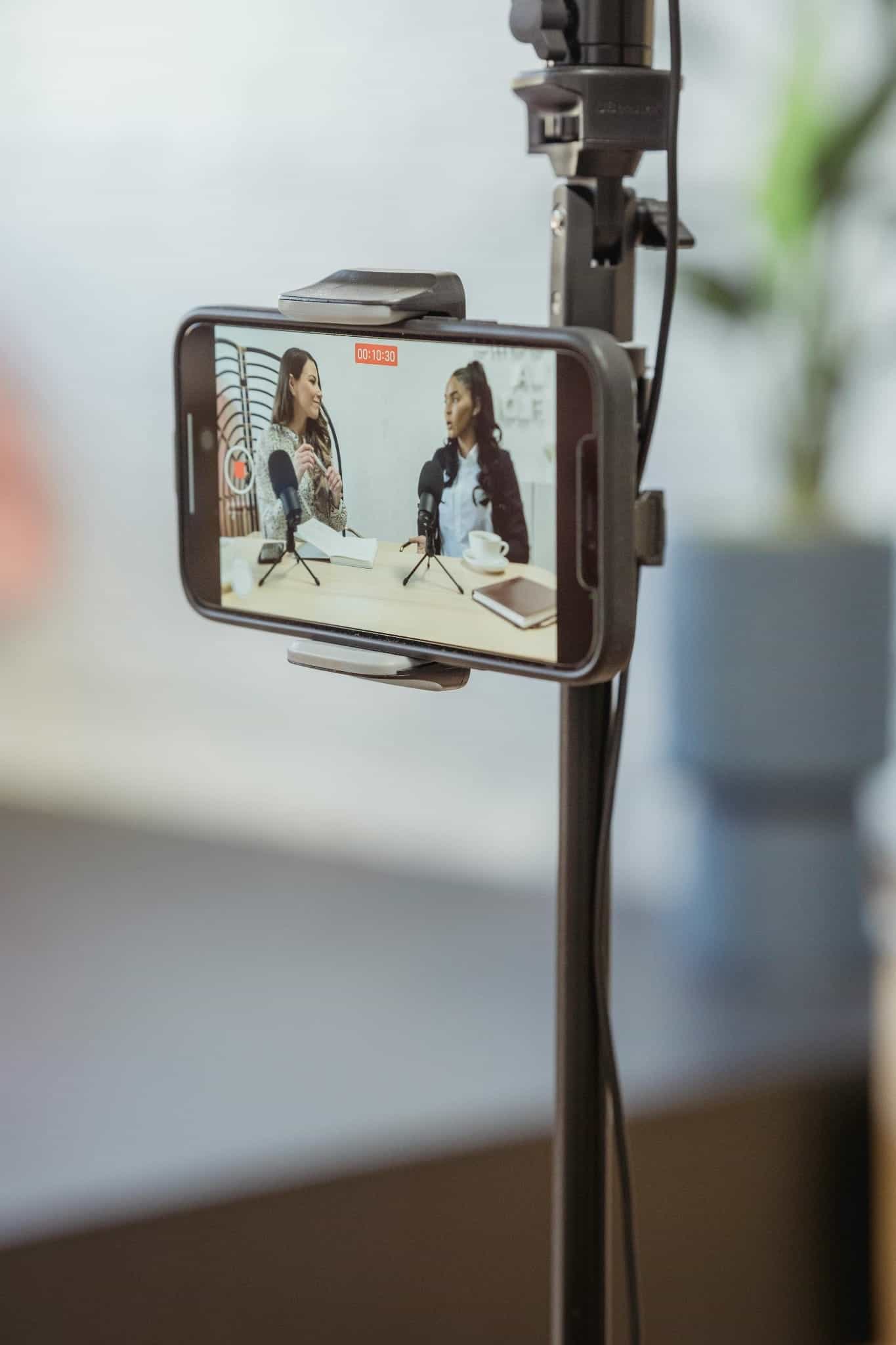The digital revolution and the advent of social media have fundamentally changed the way businesses and their customers interact. Consumer behavior and expectations are shaped by the channels and platforms they use, with customers increasingly expecting instant resolution to problems and constant streams of engaging and interactive content.
Marketing has evolved far beyond billboards and television commercials. With 13 new users signing up to social media every second, here is where companies can make the most impact on how their brand is perceived and leverage exposure to supercharge demand for their goods or services.
Read on to learn more about how social media can revolutionize your marketing strategies, boosting your demand generation efforts.

Free to use image sourced from Unsplash
What Is Demand Generation for Social Media?
Demand generation is a marketing strategy that bridges the gap between consumer needs and your products by increasing brand awareness through various channels and platforms. A typical strategy involves gathering intel on how well a target audience understands your brand, how your brand could be introduced to new customers, and how current leads could be nurtured.
If you’re using this strategy to generate b2b leads, the key questions to ask are how your brand can solve a customer issue, and how you can ensure that these customers trust your brand to provide a valuable solution.
Social media becomes a crucial tool when you’re targeting B2C leads, too. In this case, brands can engage audiences with compelling content that actively increases interest in your company and its product offerings. You’ll aim to develop and nurture relationships via your online presence and strengthen credibility by engaging directly with prospects and answering queries.
Demand Generation vs Lead Generation
The main difference between demand generation and lead generation is that the latter tends to focus on collecting contact information as its aim, while the former sets relationship-building goals. With demand generation, the hope is to create content that consumers find valuable and, through that, improve brand reputation.
Demand generation is a better answer to modern consumer demands. It seeks to create personable brands and long-term prospects rather than generate immediate leads.
It also occurs at a different stage of the sales funnel compared to lead generation. Demand is typically created at the top of the funnel – it’s your customers’ first point of contact with your brand. Conversely, lead generation occurs once buyers pass through this stage, having shown enough interest already to register with your website, subscribe to a newsletter, or sign up for a demo.
Why Is Social Media Essential for Demand Generation?
Social media platforms are the perfect touch points through which to reach out and connect with customers and communicate your brand story. Let’s look at some of the benefits.

Free to use image sourced from Unsplash
Boost brand awareness and engagement
Social media brand building means creating an awareness of your brand and fostering meaningful connections with customers. Via relevant platforms, you can create engaging content that draws consumers to your company while establishing your credibility in a given industry.
Where B2B is concerned, you’ll use professional social media channels like LinkedIn to publish thought leadership and establish your brand expertise. You can also use social media to communicate with your customer base, answer questions, and personalize interactions.
It’s essential you convey a consistent message across your social media accounts. Keep your aesthetics consistent and eye-catching so that audiences recognize your brand whenever they interact with it. Doing this means you’ll boost brand awareness at the same time as seeing increased growth.
Create a relatable brand
Creating a relatable brand means humanizing your company and ensuring that you’re communicating with a personal touch. There’s no better place to do this than via social media. On Instagram, TikTok, or YouTube you can upload videos, shoot real-time footage, and show your customers the people behind your company.
You should aim to build a brand story or narrative behind your social messaging. Show consumers where you fit within your industry and why you are different. This will help harness deeper connections, create more meaningful conversations, and grow more authentic engagement.
Access real-time insights
Social media is not only useful for communication with customers but also for understanding the patterns and behaviors behind their buying habits. Interacting with your target demographic means you can collect valuable data about their interests and use this to inform your future campaigns.
Analytics like traffic to your website, links, and click-through rates will also give you a good sense of how users engage with your content and what they find most interesting.
Just remember to ensure the privacy and security of customer data and communicate that effectively. Consumers are more likely to trust a company that is responsible when dealing with their personal data and takes the necessary steps to keep it as secure as possible.

Free to use image sourced from Unsplash
Key Stages of Using Social Media for Demand Generation
The key stages for effective use of social media for demand generation are as follows:
Recognize
The first stage is to recognize who your core customer base is and where they reside. For example, if you’re a makeup company targeting 18 to 24-year-olds, you’re more likely to find engaged users on TikTok than any other social media platform.
Once you’ve identified consumers, you need to figure out what resonates most within this demographic. Do they engage more with live content, reels, photos, etc?
Engage
Next, you should create content that users will find both engaging and rewarding. For professionals, this might be relevant industry insights, articles, or webinars. Educational content can be a great way to advocate for your brand at the same time as offering meaningful and useful content.
You can also use social media to communicate personal stories, such as how your company was founded and what your brand mission is. This creates personal connections and distinguishes you from a competitor who doesn’t take steps to put a face to the name of their business.
Strengthen
Once you’ve created connections with consumers, you should continue to strengthen and nurture these. Answer questions in a timely manner, respond to comments left on your social media pages, and generate content that builds excitement for new releases.
The more authentic the relationships you build, the more loyal your customer base will be.
Convert
Finally, you should use social media for converting and prospecting sales. This means identifying potential new consumer bases and transforming your social media following into purchasing customers. You can do this by sharing exclusive offers and discounts, teasing product releases, and hosting giveaways.
Converting engaged social media users into customers means demonstrating the desirability of your products. Ensure that your content is mobile-friendly and accessible, that you stay in the minds of your customers, and that you encourage your audience to visit your websites or social media shops.

Free to use image sourced from Pixabay
Best Practices for Your Social Media Strategy
Using social media for demand generation means following a list of best practices to ensure you’re getting the most out of your platforms.
Take a look at the list below to get started.
Set clear goals
You should set out on your social media journey by setting clear goals. What do you want to achieve through your content? Are you looking to increase community engagement? Build brand awareness? Offer efficient customer support? All these can be important goals within demand generation strategies.
Make sure you are keeping track of progress and adjusting your aims as your business grows.
Understand your target demographic
Content marketing can only be effective when you understand who your target demographics are and what interests them. You should personalize your messaging based on what most appeals, and align your strategy with brands that have made a big impact within your core demos.
Take a look at how companies like Dove have understood the importance of diversity and inclusivity to their audience. They have embraced influencer marketing and rethought their marketing campaigns to show customers that representation matters to their brand as much as it matters to their consumers.
Be consistent
Being consistent in social media posting means creating content according to a defined schedule. Staying at the forefront of your customers’ minds can be tricky in the fast-paced digital world. You’ll need a dedicated social media team churning out engaging and interactive content.
Remember, not all content is created equal. The key to demand generation is to create value within your social media posts. This can range from eye-catching to informative material.
Vary your content
You should create a broad range of posts across social media platforms in order to engage as many prospects as possible. Consider which are the top content distribution channels for each of the demographics you are targeting and go from there.
You can also keep each individual feed engaging by varying the media you post. You should incorporate a good mixture of photos, videos, live content, UGC, and more.
Use smart tools
Content automation and AI tools should also be leveraged for demand generation. Chatbots can be a good first point of contact when users are facing issues. In addition, AI social media management tools can help you keep your feeds consistent across platforms as well as plan posts and measure performance.
Follow trends
Social media trends are constantly changing and it’s important you stay up to date with these to ensure your content is relevant and continues to resonate with customers. Keep an eye on your marketing strategy and adjust it when necessary. The best social media marketers will know the on-trend hashtags and off-the-moment content you need to be posting.

Free to use image sourced from Unsplash
Five Ways to Boost Demand Generation with Social Media
Forging relationships and a strong brand identity via social media means building demand both organically and via paid advertising. Once you’ve established which approaches resonate with your audience, you can invest in the right content and shape your social media strategy.
Collaborations and sponsorships
A quick and effective way to broaden your reach and attract new customers is to invest in sponsored content and influencer collaborations. Influencers have built their own (often sizable) audiences and established a rapport within their communities. Provided your brand values align with theirs, you can work with an influencer to promote products or services and communicate your messaging effectively.
You should always disclose partnerships on your social media platforms and work with influencers to do the same on their pages. Establishing transparency with potential consumers builds trust and ensures your posts and affiliate links stay online.
Interactivity
The best way to keep consumers engaged is to post content that is interactive and fun and keeps users coming back to your pages. You can do this by creating polls, quizzes, Q&As, and online games.
Caption contests, photo posting games, personality tests, and more will add uniqueness to your feed and show your brand personality. Once you’ve attracted users with interactivity, you can capture buyers with CTAs and offers.
User-generated content
User-generated content means reposting customer accounts and asking them to share reviews on your pages. This kind of content acts as social proof: it shows interested users that others have had positive experiences with your brand and that it’s a credible place to purchase from.
You should aim to post user-generated content regularly, sharing positive feedback, and creating tags and hashtags for customers to use across their social media.
Advertising
If you’re struggling to boost your social media audience organically, you can drive demand with paid social media ads. Certain platforms like Instagram and TikTok allow businesses to pay for ads to be targeted at specific customer groups. These will appear in user feeds and help your brand reach more people.
Live Streams
Live streaming allows your businesses to connect more directly with consumers. You can schedule live product launches, Q&As, and live feedback sessions to engage with your customer base in real-time. This encourages a personal connection and allows more opportunities for customers to reach out and ask questions.
You should track metrics and keep an eye on viewer count throughout your live events. Work out when your target demographics are online and ready to participate.

Free to use image sourced from Pexels
Grow Your Audience and Build Stronger Customer Relationships
Social media is an essential element of an effective demand-generation strategy. It provides a platform through which you get to know your audience and be responsive to their wants/needs. From here, you can build your brand credibility, foster connections, and strengthen trust with your consumers.
Identify where your customer base lives on social media and create a marketing plan from there. Content should be engaging and interactive, and spark an ongoing interest in your brand. You should show users that your product or service is perfectly placed to solve their problems and invest in partnerships, collaborations, and advertising to support this.
Boosting demand through social media requires both time investment and adaptability. Be ready to respond to the latest trends and modify your approach based on fast-changing interests.


